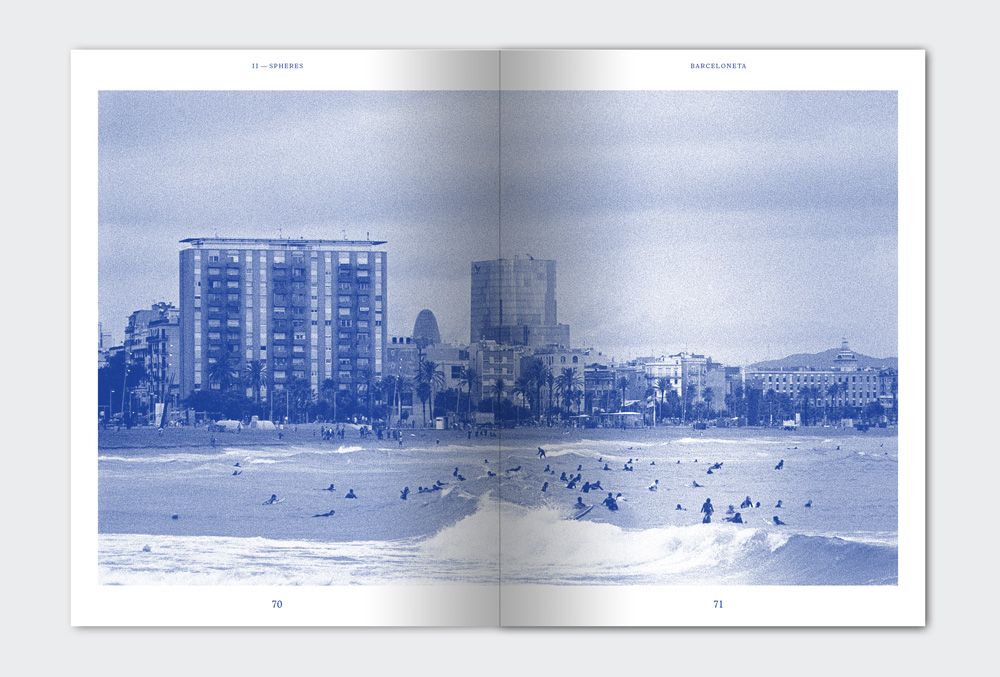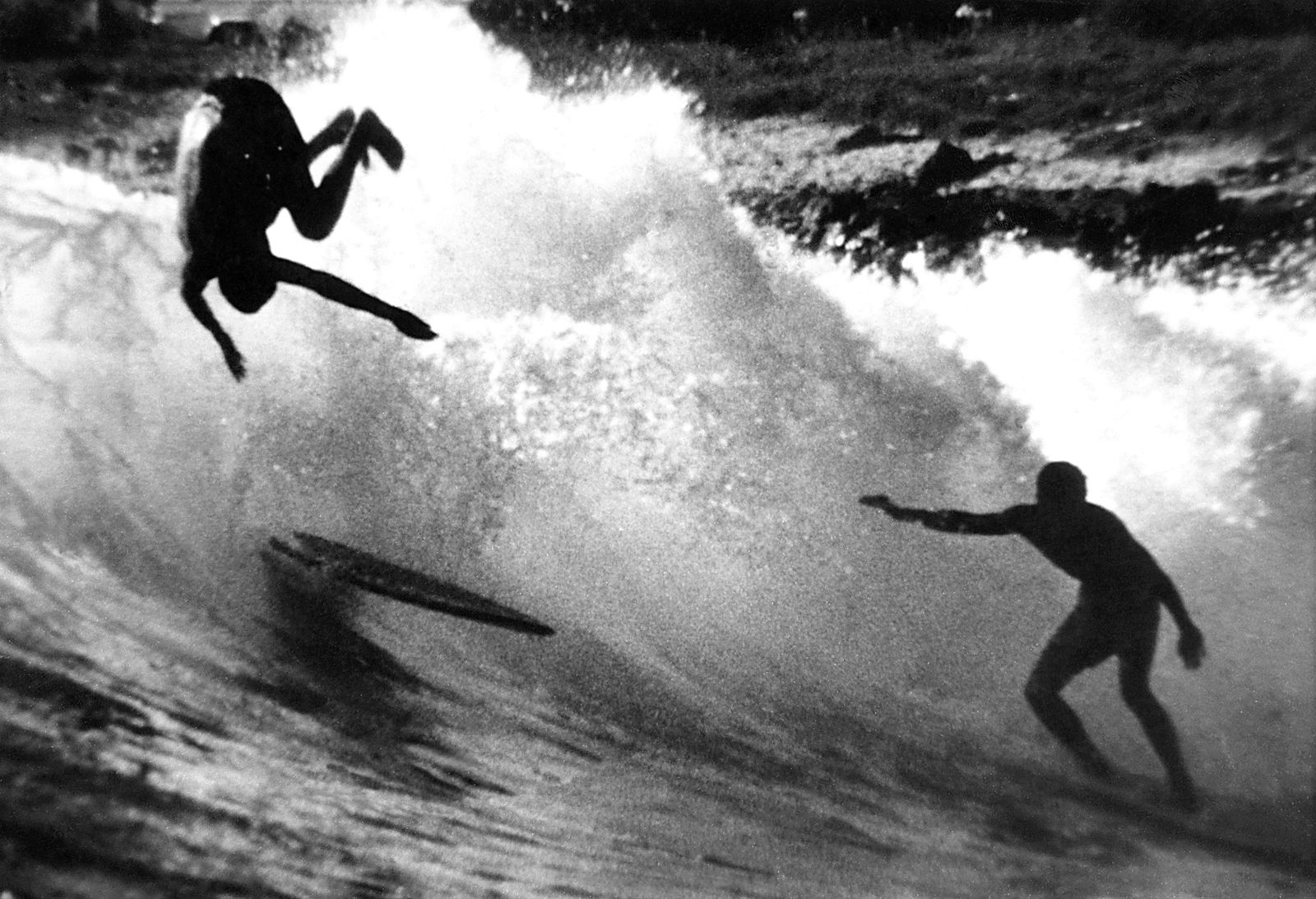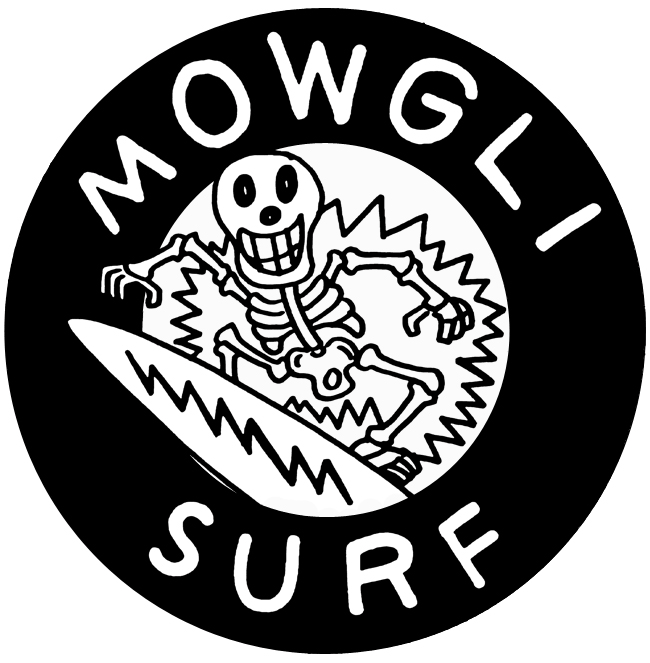WATER PEOPLE: An Interview with New York Urban Surf Magazine WAX
WAX is a bi-annual print publication investigating the intersection of art, culture and surfing in and around New York City. Founded in 2012 by graphic designers David Yun and Zak Klauck, alongside writer Aeriel Brown, the magazine pushes past the topical to go deeper into the lives of the urban surf community. The three are soon set to launch their fifth issue, and will host a one-day-only exhibition and pop-up store to launch Arcangel Surfware, a new clothing and lifestyle merchandise line by artist Cory Arcangel. 032c spoke to the three urban surfers ahead of the exhibition, which takes place today at the Holiday Inn New York-Soho from 2-9 PM.

032c: We published an interview with Werner Herzog last year where he said “The world reveals to those who travel on foot.” What about those who surf?
WAX: It would be an understatement to say that surfing alleviates some of the stresses most common to living in the city (particularly New York). There is a distinct comfort in knowing that one can be in the ocean (its own kind of wilderness) in less than 45 minutes. There’s a peace in that. It also serves as a reminder that, even in intense urban environments, we are surrounded by nature. Last summer, a pod of whales stationed themselves just off the coast in Rockaway. While we were surfing, people were hooting with excitement every time one would breach. Then, afterwards, we tied our boards to our car and headed back into the city for work. To have these two profoundly different experiences within the span of less than an hour reinforces just how close we are to nature. It’s an easy thing to forget when you live in the city. We think of the waterways and oceanways in almost mechanical terms, rarely considering how these natural elements interact with the city. They are divorced from us in our minds (this is part of the reason why Sandy was so shocking). Surfing is a powerful reminder of this relationship.

How would you define urban surfing? What does the typical urban surfer’s day look like?
It’s funny how quickly the terms “urban surfer” and “urban surfing” have almost become cliches! An urban surfer is simply one who lives in a city and surfs his or her local breaks regularly, but it feels like it’s taken on a secondary connotation. A typical urban surfer’s day would look like any other person’s day, just with a session tacked on at the beginning or end (although we are sure that there is a fair bit of checking in on the surf cams and watching forecasts during the workday as well).

The stories in your magazine tend to take the surfer as the point of focus, rather than the sport itself. Is there some kind of commonality or red thread you’ve found among all the urban surfers you’ve profiled?
A love of surfing and the ocean is the most common thread, of course. We try to see that as a center from which all the other spokes of our magazine emanate. In our inaugural issue, long distance swimmer Lynne Cox said that there are two types of people in the world: water people and not-water people. We try to celebrate all kinds of water people. This is why the focus is on the person, not the act itself. There are only so many interesting way to speak about the act of surfing itself, but there are an infinite number of ways to tell the story of a person. We tend to focus on people who are doing things we find interesting out of the water (or who allow the water to influence their outside interests and practices) and often times that means artists and designers. This is by no means, however, representative of everyone in the water. That is one of the great things about surfing: it attracts all types of water people. And it’s a great equalizer. It’s a very humbling activity.

David, you’ve mentioned you were into skateboarding before you discovered surfing. Do these two worlds intersect?
Being a street-skater originally, there isn’t a whole lot of similarity between movements in surfing and skating (as much as bowl skating, for instance). But there is this idea that you take an environment and look for the idiosyncrasies of that environment, and you play off of them. In the one case, it’s urban structures: platforms, walls, curbs, ramps, etc, and in the other case, it’s swell in the water. Swells come in all kinds of shapes and sizes and so it becomes a bit of a creative problem-solving experience in the same way that street skating is about negotiating the interruptions in the urban landscape. There’s something utterly common yet distinctive about so-called board sports — and that is you have essentially one simple object, a plank, that lets you navigate a space in a completely different way than you could imagine without the plank. I enjoy the simplicity of those experiences.

New York City doesn’t seem to embrace its coastal position as much as other cities do. Why do you think this is? Is it simply a climate thing?
It’s the combination of a lot of things. Part of it is climate (most of us only engage with our coastline once or twice a year) and part of it is because of how we look (or have historically looked) at our waterways, which is as arteries for commerce and not as part of the urban landscape. New York isn’t an exception in this way of thinking. Most of the East Coast cities view their coastline this way. It’s unfortunate and it contributes to a lot of the environmental damages that have happened and continue to happen in these waters. Sandy really drove home how close we are to the water, how untamed nature is and how damaged the waterways are. The West Coast cities have done a better job of embracing their coastal positions. Perhaps this is because they weren’t used as ports of commerce until much later in our national history.

What do you think differentiates East coast surfers from West coast surfers?
In some sense, a surfer is a surfer — whatever coast you’re from in the world. That being said, East coast surfers have to think slightly differently about surfing than those living in So Cal or Hawaii or other locations where the surf is good-to-great most of the year. It takes a lot of patience to be an East coast surfer because good waves don’t occur as regularly. You have to be willing to go out in less than perfect conditions, because if you wait for the perfect day, you’ll be waiting a long time between sessions. You also have to tolerate the cold (which can be tough). And specifically, as a New York surfer, there are other things you have to contend with that have nothing to do with being a surfer at all and more to do with being a New Yorker. Things like how to fit your 9’ 4” board in your apartment with 9’ ceilings. Or how to get that board down four flights of stairs. Or even having to figure out how to get out to the beach because hardly anyone has a car in New York. These things can be real deterrents for people and real challenges. And this is before you even get in the water! That being said, we’re also a little spoiled. We think ‘crowded’ is ten other people in the lineup with you.

You’re second issue was published just after Hurricane Sandy hit the east coast. What kind of impact did this have on New York surfing culture, and has anything changed since, or have things more or less restored to their previous state?
Right after Sandy, there was a palpable sense of camaraderie among surfers and Rockaway residents. The surfers were some of the first people to head out to the coastal towns to dig people out and bring supplies. There were a lot of grassroots efforts organized by New York’s surfers because we all felt committed to these communities and beaches that we love. The rebuild helped raise some awareness as well. It brought a lot more people out to Rockaway, for instance, and I think in some part helped fuel the popularity of Rockaway as a destination spot for Brooklyn and Manhattanites. People feel committed to these places because they were involved in the rebuild in some ways. It helps, of course, that businesses and builders are also investing in Rockaway so there are amenities to keep people out there once they are there. Things are shifting a little back towards pre-Sandy days but overall, we think the changes are positive.

